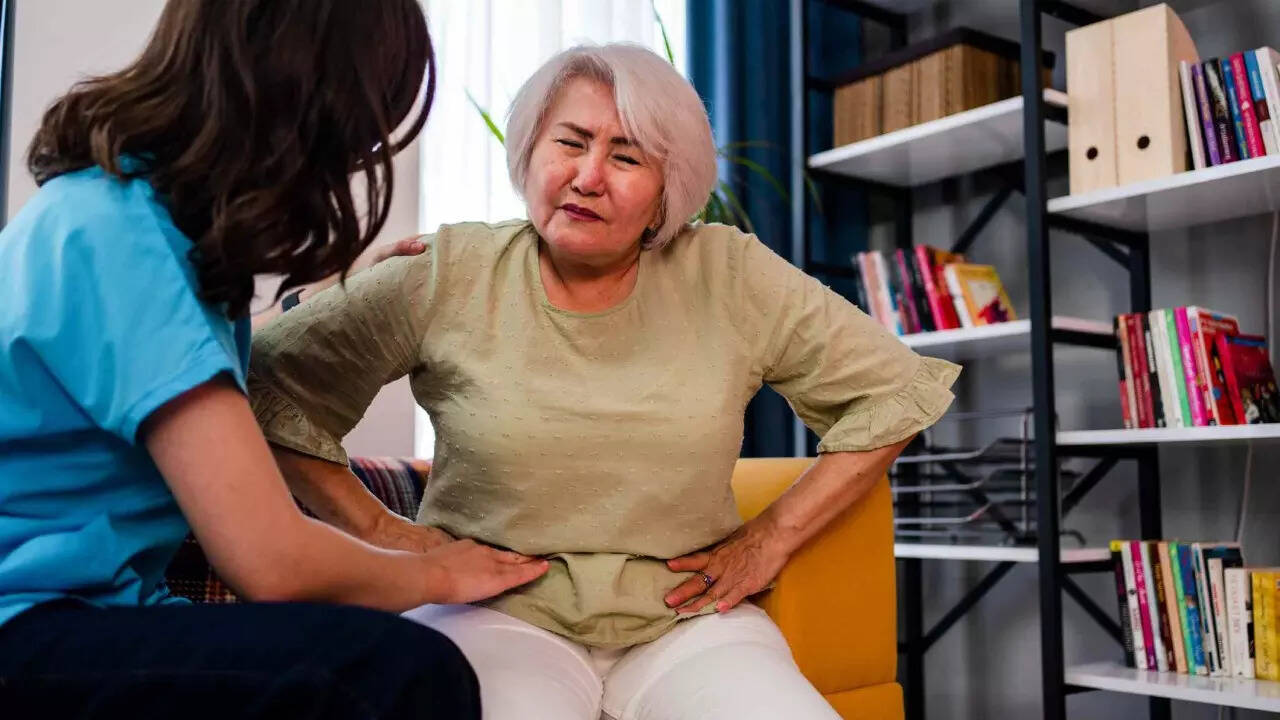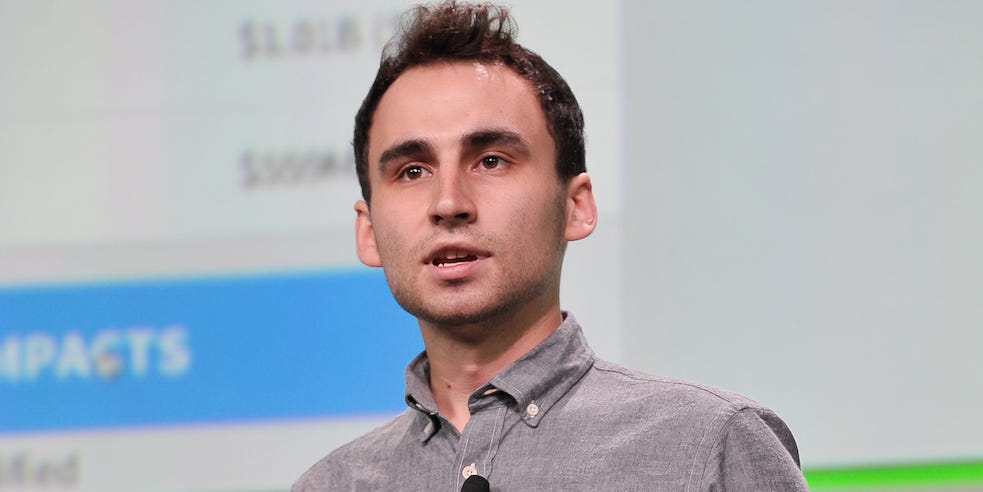
Ross Taylor To Come Out Of Retirement Aiming To Play T20 World Cup 2026, But Not For New Zealand
Photo : ICC
Ross Taylor is one of the greatest players to ever play for New Zealand. The right-handed batter is the second-highest run scorer in th country’s history, with 18199 runs across all three formats. He announced his retirement back in 2022, with his last match for the Kiwis against Netherlands in an ODI in Hamilton. Three years after his retirement, he is set to be back in international cricket, hoping to play the T20 World Cup 2026. However, he would not be playing for New Zealand, but a different nation altogether.
Ross Taylor has announced that he will be playing for Samoa in the Asia-East Asia-Pacific T20 World Cup 2026 qualifier in Oman. He is part of the 15-man squad that will be led by Caleb Jasmat.
Taylor holds a Samoan passport as his mother of Samoan heritage. He is eligible to play for the country, as he has successfully competed a three-year cooling-off period that is required to play for a second international team.
“It’s official – I’m proud to announce that I’ll be pulling on the blue and representing Samoa in cricket. This is more than just a return to the game I love – it’s the huge honour to represent my heritage, culture, villages, and family. I’m excited for the opportunity to give back to the game, join the squad, and share my experience on and off the field,” Taylor wrote in a heartfelt post on Instagram.
The 41-year-old batter expressed his excitement to play for the country where his mother hails from. He also revealed that the process for him to play for Samoa had been ongoing for a few months.
“I’m excited. It’s been a few months in the pipeline, but obviously the team just got announced today, so I had to make it exciting to represent the country of my mother’s birth. I always thought it would be more in coaching and other avenues. I never thought I’d play, but as the opportunity arose, yeah, looking forward to getting out there and hopefully representing and doing my best for Samoa,”” Taylor said as quoted by Cricbuzz.

Henry Godfrey-EvansBBC News, Essex
 Historic England
Historic EnglandThe garden of a listed building has also received protected status by Historic England.
The Garden of Great Ruffins in Wickham Bishops, Essex, has been given a Grade II listing in recognition of its close resemblance to its original layout, with a terrace, a series of garden rooms, sunken rockery, cedar avenue, bowling green and surrounding yew hedges.
In 1903, it was created by nationally renowned architect Arthur Heygate Mackmurdo as part of plans for his family home, but he was forced to sell it in 1920 without ever living there due to financial difficulties.
The suburban arts and crafts garden is Mackmurdo’s last surviving landscape.
 Historic England
Historic EnglandHis design was intended to mirror his social beliefs about harmonious living.
It achieves this by blending more formal areas near the house with “rustic” woodland walks, and eventually to the open countryside.
Views of the garden and wider landscape beyond can be seen from the Grade II* listed building’s tower.
Outside of his work at Great Ruffins, Mackmurdo was an influential designer, artist and architect within the arts and crafts movement.
He co-founded the Century Guild of Artists in 1882 and was a social reformer; particularly interested in the social problems of rural areas.
That led to him becoming the founding secretary of the Rural Community Council for Essex in 1929.
 Historic England
Historic EnglandTony Calladine, East of England regional director at Historic England, said the grounds have had a “great influence” on British garden design.
“The arts and crafts movement emphasised harmony between buildings and landscapes – principles that continue to inspire designers and gardeners today,” he said.
“The protection of Great Ruffins’ garden means that it will continue to be seen and enjoyed in the Essex landscape it was designed to complement, for generations to come.”
Owner of the property, Lionel Bailly, said: “In these times where less and less value seems to be placed on the creation of beauty and the need for lived spaces to be harmonious with the natural environment, we are so pleased that Historic England has recognised this garden as worthy of protection.

Lululemon shares fell sharply on Thursday after the company warned over the impact on its business of US President Donald Trump’s tariffs and his decision to close a duty-free loophole.
The Canadian company says the US levies and the ending of the so-called de minimis exemption will cost it about $240m (£178.4m) this year.
The policy had allowed companies to ship online orders worth $800 or less into the US without having to pay import duties.
The retailer slashed its outlook, forecasting sales for the next three months of between $2.47bn to $2.5bn, which was lower than analysts had expected.
The removal of the de minimis rule will have a “significant impact” on Lululemon’s earnings as it will disrupt its US e-commerce shipments, the firm’s chief financial officer Meghan Frank said in an earnings call.
In terms of sales, the company has seen “positive momentum” overseas but is “disappointed” by its US performance, said Lululemon boss Calvin McDonald in a statement.
The firm is considering ways to soften the impact of tariffs by adjusting its supply chain and cutting costs, though changes will take time, he told analysts.
Lululemon’s product cycles had “run too long” and had become “too predictable”, missing out on new trends, he said.
The company said earlier this year that it would make “modest” price increases due to the rising costs.
The majority of Lululemon’s products are made in Asian countries like China and Vietnam.
Clothing brands are among the businesses hit hardest by tariffs as they make goods in Asian countries, which have faced some of the steepest US levies.
Lululemon faces increasing competition from lower-priced rivals like Vuori and Alo Yoga.
Its shares were more than 15% lower in extended trading in New York on Thursday.
Trump’s tariffs have pushed other sportswear brands to raise prices in recent months.
Adidas warned that the tariffs will cost it €200m (£173m; $233m) and raised prices for American customers. Nearly half of the company’s products are made in Asia.
In June, Nike raised prices on some of its trainers and clothing fin the US.

Kevin Parker is taking the Deadbeat route.
The celebrated psychedelic pop artist and production wizard is lining up his fifth Tame Impala album, Deadbeat, for a global release Oct. 17th — his first through the Sony Music machine.
Deadbeat is inspired by the “bush doof” culture of his native, Western Australia rave scene, and recasts his ongoing art project as “a kind of future primitive rave act in the process,” reads a statement.
The second taste from Deadbeat is “Loser,” a track that’s accompanied with a music video directed by Kristofski and starring Stranger Things‘ Joe Keery (aka Djo). It’s the followup to lengthy electronic banger “End of Summer,” which arrived, fully formed, in July of this year.
“Loser” is a departure from those parties in paddock, instead taking us on a magic carpet ride to a funky ‘70s houseparty. And no, it’s not a cover of Beck’s self-deprecating classic from 1994.
Parker “largely galvanized” the new album between his hometown of Fremantle and his studio, Wave House in Injidup, WA in the first half of this year.
Essentially a one-man band (though Parker takes a full unit on the road), Tame Impala has collected ARIA Awards, APRA Awards, a Brit Award, and earlier this year, a Grammy, by way of a collaboration with Justice.
Deadbeat arrives more than half a decade after The Slow Rush, from February 2020, a record that went to No. 1 on Australia’s ARIA Chart, and earned career peak positions on the Billboard 200 and Official U.K. Albums Chart UK, both at No. 3. Its predecessor, 2015’s Currents, topped the Australian chart and crashed the top 5 in the U.S. (at No. 4) and in the U.K. (No. 3), where Parker collected the Brit Award for best international group.
The forthcoming album “sounds like the work of an artist with a leveled-up mastery, crafted with a newfound embrace of spontaneity for the renowned perfectionist,” reads a statement. “How that manifests is a distinct minimalism and crunch, with timbres and textures that add an ineffably new dimension to the sound, as well as a richer, more playful vocal range than ever.”
The new collection is the first through Columbia Records, following a years-long relationship with Modular Recordings and Universal Music.
Although Tame Impala is not currently on tour, Parker will enjoy the southern summer when he takes the stage as a a special guest DJ for Justice’s Australian arena tour in December 2025.
Deadbeat is available for pre-order here, and exclusive vinyl color-variants can be ordered here.

Islamabad, Pakistan – For the second time in three years, catastrophic monsoon floods have carved a path of destruction across Pakistan’s north and central regions, particularly in its Punjab province, submerging villages, drowning farmland, displacing millions and killing hundreds.
This year, India – Pakistan’s archrival and a nuclear-armed neighbour – is also reeling. Its northern states, including Himachal Pradesh, Uttarakhand and Indian Punjab, have seen widespread flooding as heavy monsoon rains swell rivers on both sides of the border.
list of 4 itemsend of list
Pakistani authorities say that since late June, when the monsoon season began, at least 884 people have died nationally, more than 220 of them in Punjab. On the Indian side, the casualty count has crossed 100, with more than 30 dead in Indian Punjab.
Yet, shared suffering hasn’t brought the neighbours closer: In Pakistan’s Punjab, which borders India, federal minister Ahsan Iqbal has, in fact, accused New Delhi of deliberately releasing excess water from dams without timely warnings.
“India has started using water as a weapon and has caused wide-scale flooding in Punjab,” Iqbal said last month, citing releases into the Ravi, Sutlej and Chenab rivers, all of which originate in Indian territory and flow into Pakistan.
Iqbal further said that releasing flood water was the “worst example of water aggression” by India, which he said threatened lives, property and livelihoods.
“Some issues should be beyond politics, and water cooperation must be one of them,” the minister said on August 27, while he participated in rescue efforts in Narowal city, his constituency that borders India.
Those accusations come amid heightened tensions between India and Pakistan, and the breakdown of a six-decade-old pact that helped them share waters for rivers that are lifelines to both nations.
But experts argue that the evidence is thin to suggest that India might have deliberately sought to flood Pakistan – and the larger nation’s own woes point to the risks of such a strategy, even if New Delhi were to contemplate it.
Relations between India and Pakistan, already at a historic low, plummeted further in April after the Pahalgam attack, in which gunmen killed 26 civilians in Indian-administered Kashmir. India blamed Pakistan for the attack and walked out of the Indus Waters Treaty (IWT), the transboundary agreement that governs the Indus Basin’s six rivers.
Pakistan rejected the accusation that it was in any way behind the Pahalgam attack. But in early May, the neighbours waged a four-day conflict, targeting each other’s military bases with missiles and drones in the gravest military escalation between them in almost three decades.
Under the IWT, the two countries were required to exchange detailed water-flow data regularly. With India no longer adhering to the pact, fears have mounted in recent months that New Delhi could either try to stop the flow of water into Pakistan, or flood its western neighbour through sudden, large releases.
After New Delhi suspended its participation in the IWT, India’s Home Minister Amit Shah in June said the treaty would never be restored, a stance that prompted protests in Pakistan and accusations of “water terrorism”.
But while the Indian government has not issued a formal response to accusations that it has chosen to flood Pakistan, the Indian High Commission in Islamabad has, in the last two weeks, shared several warnings of possible cross-border flooding on “humanitarian grounds”.
And water experts say that attributing Pakistan’s floods primarily to Indian water releases from dams is an “oversimplification” of the causes of the crisis that risks obscuring the urgent, shared challenges posed by climate change and ageing infrastructure.
“The Indian decision to release water from their dam has not caused flooding in Pakistan,” said Daanish Mustafa, a professor of critical geography at King’s College London.
“India has major dams on its rivers, which eventually make their way to Pakistan. Any excess water that will be released from these rivers will significantly impact India’s own states first,” he told Al Jazeera.
Both Pakistan and India depend on glaciers in the Himalayan and Karakoram ranges to feed their rivers. For Pakistan, the Indus river basin is a lifeline. It supplies water to most of the country’s roughly 250 million people and underpins its agriculture.

Under the IWT, India controls the three eastern rivers – Ravi, Sutlej and Beas – while Pakistan controls the three western rivers, Jhelum, Chenab and Indus.
India is obligated to allow waters of the western rivers to flow into Pakistan with limited exceptions, and to provide timely, detailed hydrological data.
India has built dams on the eastern rivers it controls, and the flow of the Ravi and Sutlej into Pakistan has considerably reduced since then. It has also built dams on some of the western rivers – it is allowed to, under the treaty, as long as that does not affect the volume of water flowing into Pakistan.
But melting glaciers and an unusually intense summer monsoon pushed river levels on both sides of the border dangerously high this year.
In Pakistan, glacial outbursts followed by heavy rains raised levels in the western rivers, while surging flows put infrastructure on the eastern rivers in India at serious risk.
Mustafa of King’s College said that dams – like other infrastructure – are designed keeping in mind a safe capacity of water that they can hold, and are typically meant to operate for about 100 years. But climate change has dramatically altered the average rainfall that might have been taken into account while designing these projects.
“The parameters used to build the dams are now obsolete and meaningless,” he said. “When the capacity of the dams is exceeded, water must be released or it will put the entire structure at risk of destruction.”
Among the major dams upstream in Indian territory are Salal and Baglihar on the Chenab; Pong on the Beas; Bhakra on the Sutlej; and Ranjit Sagar (also known as Thein) on the Ravi.
These dams are based in Indian-administered Jammu and Kashmir, Indian Punjab and Himachal Pradesh, with vast areas of Indian territory between them and the border.
Blaming India for the flooding in Pakistan makes no sense, said Shiraz Memon, a former Pakistani representative on the bilateral commission tasked under the IWT to monitor the implementation of the pact.
“Instead of acknowledging that India has shared warnings, we are blaming them of water terrorism. It is [a] simple, natural flood phenomenon,” Memon said, adding that by the end of August, reservoirs across the region were full.
“With water at capacity, spillways had to be opened for downstream releases. This is a natural solution as there is no other option available,” he told Al Jazeera.

According to September 3 data on India’s Central Water Commission website, at least a dozen sites face a “severe” flood situation, and another 19 are above normal flood levels.
The same day, Pakistan’s Ministry of Water Resources issued a notification, quoting a message from the Indian High Commission, warning of “high flood” on the Sutlej and Tawi rivers.
It was the fourth such notice by India after three earlier warnings last week, but none contained detailed hydrological data.
Pakistan’s Meteorological Department, in a report on September 4, said on the Pakistani side, two sites on the Sutlej and Ravi faced “extremely high” flood levels, while two other sites on the Ravi and Chenab saw “very high” levels.
The sheer volume of water during an intense monsoon often exceeds any single dam or barrage’s capacity. Controlled releases have become a necessary, if dangerous, part of flood management on both sides of the border, said experts.
They added that while the IWT obliged India to alert Pakistan to abnormal flows, Pakistan also needs better monitoring and real-time data systems rather than relying solely on diplomatic exchanges.
The blame game, analysts warn, can serve short-term political purposes on both sides, especially after May’s conflict.
For India, suspending the treaty is framed as a firm stance against what it sees as Pakistan’s state-sponsored terrorism. For Pakistan, blaming India can provide a political scapegoat that distracts from domestic failures in flood mitigation and governance.
“Rivers are living, breathing entities. This is what they do; they are always on the move. You cannot control the flood, especially a high or severe flood,” academic Mustafa said.
Blaming India won’t stop the floods. But, he added, it appears to be an “easy way out to relinquish responsibility”.

Thailand’s influential former prime miniser Thaksin Shinawatra flew out of the country on Thursday, police said, a day before a parliamentary vote for the next prime minister and ahead of a court ruling that could see him jailed.
Many in Thailand spent Thursday evening glued to flight tracking websites, avidly following the path of Thaksin’s private jet.
News that he was at Bangkok’s Don Mueang Airport broke early on Thursday evening, with local media reporting he had been stopped by immigration. He planned to visit Singapore for two days for a medical appointment, Thai outlets reported.
His plane took off after authorities confirmed that he did not have any court order prohibiting him from leaving the country, police said in a statement.
As he left Thailand, social media was flooded with speculation. Many wondered if Thaksin might instead head to Dubai, where he previously lived in self-imposed exile to avoid legal charges for abuse of power and conflicts of interest.
His trip abroad comes just days before a court is due to rule in a legal case that could result in him being sent to jail – and the night before parliament was set to decide who should replace his ousted daughter Paetongtarn Shinawatra as prime minister.
Tens of thousands tracked his plane online, as it flew from Bangkok down through the Gulf of Thailand, then crossing through Malaysia. But rather than stopping in Singapore, the plane suddenly turned west, and looped in two circles.
Thai media interviewed aviation experts on air, analysing the flight path, the amount of fuel carried and its possible destination, as the story led the news bulletins.
“Dear Passenger, your captain is flying in circles to entertain Flightradar viewers, please wave your hands,” joked one social media user. Then the plane began to fly in the direction of India.
Thaksin previously spent more than 15 years in exile to avoid legal charges, and returned to Thailand only in 2023, after striking an uneasy deal with his old enemies in the military royalist establishment. The deal was mutually beneficial, with the two sides forming a government to keep a popular, youthful pro-reform party out of power.
Thaksin was sentenced to eight years in prison upon his return to Thailand, which was commuted to one year by the king. He spent less than 24 hours in prison after citing health problems, instead staying six months in a VIP hospital wing, before being released on parole.
That arrangement is now the subject of a court case, due to be decided next week. It’s possible he could be returned to prison, if judges deem that he has not yet adequately served out his sentence.
Early on Friday morning, Thaksin wrote on social media that he would return to Thailand no later than Monday, and that he would attend court in person on Tuesday to hear the judgment handed down.
Thaksin responded to online speculation by saying he had intended to travel to Singapore for a medical checkup with a doctor he had seen previously while living abroad. “Thai immigration delayed me for nearly two hours,” he said, adding this happened despite him having the right to travel.
The delay prevented him from landing at Singapore’s Seletar Airport, which is used for private jets, as the airport only operates until 10pm, he said.
“Since I couldn’t land in Singapore, I decided to have the pilot change my plans to Dubai. I have long-time orthopedic and pulmonary doctors in Dubai, and I also had the opportunity to visit friends in Dubai whom I hadn’t seen in over two years,” Thaksin wrote, saying his pilot had circled in the sky while waiting for permission from the airport in Dubai.
On social media, speculation about his family’s broader prospects continued. On Friday, Thailand’s parliament is due to vote in a new prime minister, with the royalist conservative politician Anutin Charnvirakul expected to win in a race again Chaikasem Nitisiri, a candidate from Thaksin’s Pheu Thai party.

Ranking as the third most frequent gynecologic cancer globally and the fifth leading cause of cancer death in women in the United States, ovarian cancer is often whispered about in medical circles as the “silent killer,” and for good reason. In 2024, global statistics indicate an estimated 324,603 new cases of ovarian cancer worldwide, resulting in 206,956 deaths.
It usually stems from a malignant tumor in the ovary, and the most commonly known epithelial ovarian cancer arises from abnormal cells growing uncontrollably. A woman’s lifetime risk of developing ovarian cancer is approximately 1.3%, with the risk increasing significantly with age and in women with a family history or specific gene mutations, which makes a strong case for early detection of the disease.
And although it’s hard to spot the signs distinctly, as they often hide behind subtle signs that many women overlook, it’s imperative that we pay attention to subtle early signs, like bloating, pelvic discomfort, or feeling full quickly – most of which are commonly dismissed as digestive issues or stress. Yet, recognizing these signals early can dramatically change outcomes.
Why put an emphasis on early detection? Because survival rates for ovarian cancer detected in the early stages reach as high as 90%, but only around 15-20% of cases are caught early. Women must learn to listen to their bodies and act on persistent changes, no matter how mild they seem. In order to do so, here are some subtle yet early signs that could make all the difference in the world.

X’s product head said there’s a playbook for getting rich on the platform.
Nikita Bier, who became the product head at X in July, took to the platform on Thursday to share his tips on earning money on X.
He said that users should think about one subject matter they’re an expert on, and to keep posting about it.
“It can be anything: plumbing, menswear, Indian food, furniture, social apps, whatever,” he said.
“Post one unexpected insight you picked from your experience in that area. Keep it under 5 sentences. Do this every day for 6 months,” he added.
Bier said that if someone does this consistently for six months, X will promote their account to others.
“By the end, you will be recognized as the world’s leading expert in that subject area and you can charge whatever you want for endorsements, your time, or whatever,” Bier said. “And no one will be able to take that way from you.”
Bier responded to a critical comment from an X user, who said Bier’s method wouldn’t work because the X algorithm “favors slop.”
Bier disagreed. “That was then, this is now. Make sure you write in a way that is accessible to broader audiences,” he replied.
When he landed the role of product head at X in June, he said it was because he had posted his way to the top.
“While I already spend every waking hour on this app, I’ll now be spending that time helping others unlock that same value,” he said in a June 30 X post.
He had been gunning for the role for three years, he said.
Bier’s playbook has certainly worked for some content creators on the platform.
For instance, Derek Guy, better known by his handle “Dieworkwear,” was dubbed X’s “menswear guy” because of his frequent posts on men’s clothing. Guy has 1.3 million followers on X.
Representatives for X did not respond to a request for comment from Business Insider.

The Golden State Valkyries celebrate with teammates after they clinch a spot in the playoffs.
SAN FRANCISCO (AP) — The Golden State Valkyries became the first WNBA team to reach the playoffs in its inaugural season Thursday night, with Janelle Salaun scoring 19 points in an 84-80 comeback victory against the Dallas Wings for their fifth straight win.
“Let’s goooooo!” Salaun screamed into the microphone moments after the final buzzer sounded as teammates pulled on black playoff T-shirts.
Veronica Burton’s three-point play with 22.3 seconds to go and four free throws over the final 11.4 seconds helped seal it as she scored 15 points. Carla Leite also added 15.
Monique Billings blocked a shot with 2:34 left to set up Leite’s jumper moments later before Dallas missed on the other end.
Paige Bueckers converted a three-point play with 3:34 remaining that put the Wings ahead 74-72 before the Valkyries came up with the big plays.
Salaun hit 3-pointers with 8:31 and 6:32 left, after Kate Martin’s 3 with 2:15 to go in the third got Golden State going and back within 58-52.
The Valkyries had to find a rhythm again after missing 12 of 13 shots and committing four turnovers as Dallas ended the first half on a 17-3 run for a 41-32 lead at the break.
Bueckers finished with 27 points and six assists for the Wings, who lost their ninth straight and 14th of 15.
With her first basket — an 18-foot jumper at the 8:33 mark of the opening quarter — Bueckers passed Cappie Pondexter for fifth place on the all-time rookie points list with 625.
Dallas started the game with a 10-0 burst before Golden State delivered a 19-6 run.
The Valkyries sold out for the 21st time in as many home games — and will go for a perfect run of sellouts Saturday when Minnesota visits Chase Center.
Golden State leading scorer Tiffany Hayes missed her fifth straight game because of a left knee injury.